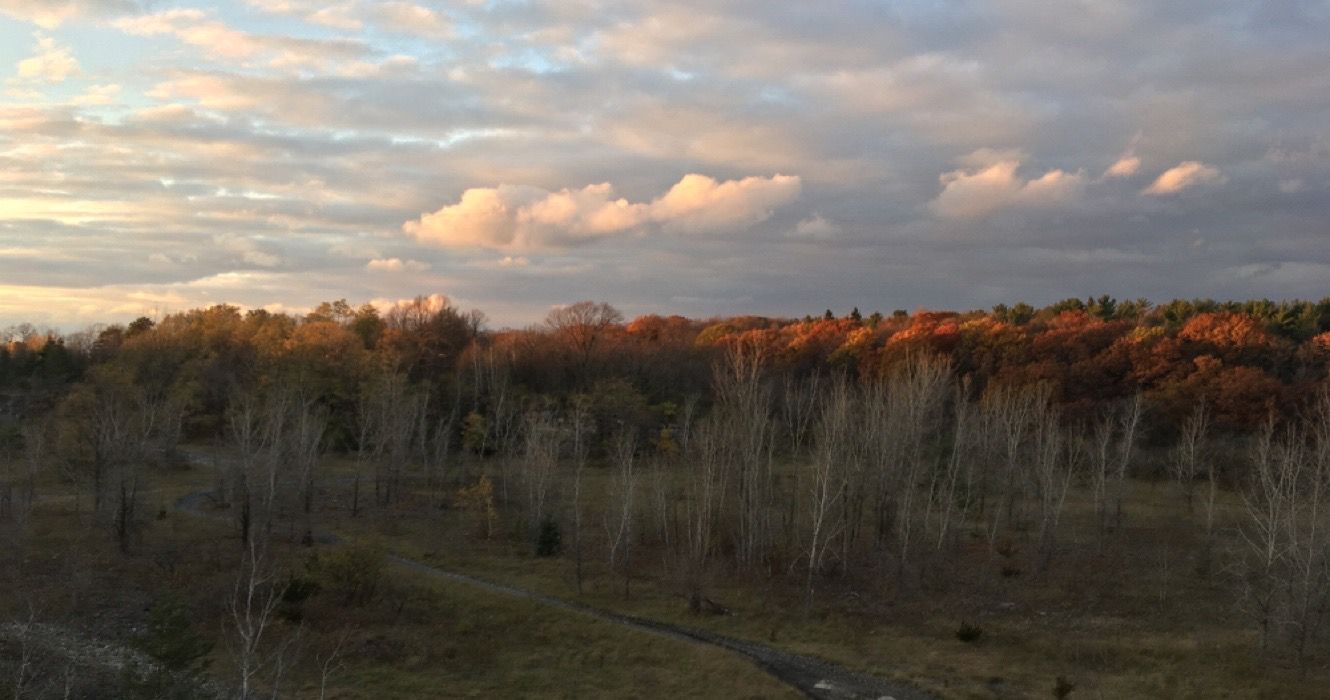Quick Links
Split Quarry, found close to Syracuse, is one of the most unusual touristic destinations in New York State. The tragic but intriguing history of Split Rock Quarry began in 1834, after its construction, and continued through the early 1920s, when it housed most of Syracuse's dangerous weapons during World War II.
The mysterious journey to Split Rock, challenging and intriguing as it may be, is worth the trip for those interested in the paranormal, eerie exploration, and obscure history, and here is why.
The Tragedy-Riddled History of Split Rock Quarry
Located in Onondaga County, New York, Split Rock is a small community inside the larger Town of Onondaga. Split Rock is of more interest to industrial archeologists now as a historic site than as a living community. Around 1834, Gilbert Coons opened a limestone quarry in Split Rock. In 1880, the Solvay Process Company ramped up its quarrying activities, developing a system of elevated conveyors to transport the limestone necessary for the Solvay process from the quarries to the nearby Solvay, New York, industrial site. Nearly a century ago, in 1912, work stopped at this quarry.
As a result of World War I, however, the Semet-Solvay Company established an ammunition facility in Split Rock in 1915. About 2500 people were working at the facility on July 2, 1918, when it exploded, killing many. Reportedly, an overheated mixing motor caused the explosion in the primary TNT facility. Fast-moving flames quickly consumed the main factory's timber framework. The lack of water pressure made it difficult to extinguish the blaze, and the facility burned to the ground.
Even though the war was going on, the factory kept turning out items like picric acid and nitric acid. After WWII, the factory stopped making war supplies and became a State Department of Transportation maintenance and parking facility for the Central New York region. The 1980s marked the end of that function. While natural vegetation has reclaimed the area, artificial tunnels and caves carved out of limestone remain.
Split Rock is also famous for being where Frederick Pursh discovered the American hart's tongue fern in 1807. This fern is considered endangered in the United States. Its natural habitat in Split Rock and the remains of the limestone quarry and munitions factory have been designated New York State Unique Area.
The Haunted Hike To Split Rock In The Present Day
Split Rock is now rumored to be haunted by the souls of those who perished in the blast. Those who venture inside the quarry at night have reported hearing voices and footsteps but seeing no one. Some witnesses have even reported hearing the stone crusher's motor start up again (even when no machine is left).
Visitors will quickly realize there is no parking lot once they reach their destination. Parking on the shoulder of the road near the trailhead is a must for those hiking. Even if the trail's graffiti is less than stellar, the trail's paints are worth checking out. Visitors usually start their time at Split Rock Quarry by checking out the Stone Crusher and the Underground Tunnel, given the quarry's size.
Take the primary trail (the painted pathway) up to the crusher and tunnel from the trailhead. At the peak, the path will split; to continue straight, visitors can go left or vice versa and should keep going forward until they reach the Stone Crusher on their left. It's impossible to miss.
The Stone Crusher was built in a massive Aztec temple style, inspiring a popular pastime: scaling its stepped vertical walls. The underground tunnel is accessible through openings in the stonework on each side of the Stone Crusher; this is a dangerous place to explore alone. As one would anywhere else in this quarry, safety is paramount.
Mountain Bike Riding Around Split Rock And The Surrounding Area
The trail has single and double tracks, providing access to several neighborhoods. It features a mix of different terrain types, including dirt, grassy spots, and solid and shattered stone. It's not challenging, but it connects several trails and is accessible from Syracuse for those who don't mind crossing a few roads. Travel west on 690 to 695, get off at Fairmount, and then travel west (to the left) on Rt. 5 to Terry road, where you should turn right.
There are various places to park about 100 yards up Split Rock on the left from the three-way intersection of Terry Road, Taunton Road, and Split Rock Road. Hikers can access this location's first segment of a multi-mile trail network. This path is just one of many that link the western part of Syracuse to the metropolitan area.
- Where to stay in Syracuse: The Sheraton Syracuse University Hotel & Conference Center is where you can find modern comfort. The hotel's position on the Syracuse University campus makes it convenient for guests of all ages, including students, alums, prospective students, sports fans, and other visitors.
- Where to eat: Located in a cozy brick building, the modern restaurant Pastabilities is known for its delicious homemade pasta dishes and other Italian-American specialties. It's on 311 S Franklin St, Syracuse, NY 13202.

